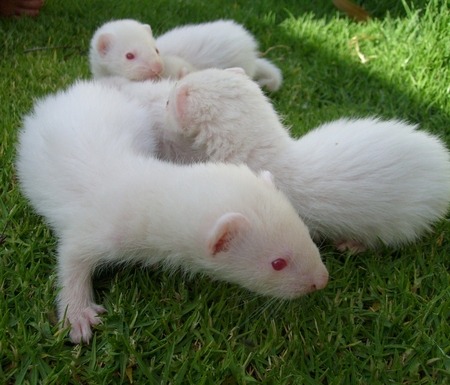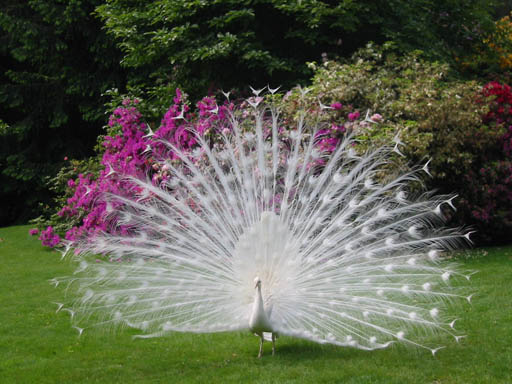|
|
|---|
Tuesday, September 21, 2010
Bongos are these really cool-looking African antelopes that are red-and-white, like many basenjis are, and they have white stripes and interesting markings on their faces and really big ears. Also, both the boy and girl bongos have horns.
 |
| One of the two bongos at the Kansas City Zoo |
There are two kinds of bongos, and one is the western or lowland bongo. The other kind is the eastern or mountain bongo. The lowland bongo lives in several different parts of central and west Africa. There aren't as many of them as there used to be, so they are said to be NEAR THREATENED. The mountain bongo lives only in one place way up in the mountains in Kenya. There are really, really, really not many of this kind of bongo left in the wild, so they are said to be CRITICALLY ENDANGERED.
 |
| The kind of forest that bongos like |
Both kinds of bongos like to live in really thick forests. They can lay their horns back against their necks and run really fast without getting tangled up in stuff. The best kind of forest for them to live in is where some of the plants and trees have been messed up somehow, like maybe by elephants eating them, or by fires, floods, or anything that makes trees fall down. When this kind of thing happens, lots of short plants grow that are yummy and easy for the bongos to eat. Besides leaves and bushes, bongos also eat vines, grass, roots, fruits, bark, and the pithy stuff from rotting trees.
 |
| A bongo drinking in a swamp |
Bongos need to eat lots of salt, so they go to salt licks and they also eat charcoal from trees that got struck by lightning. They have long tongues that can wrap around things, so that helps them get ahold of their food.
 |
| Four baby bongos and their teenaged babysitter |
A bongo's horn is hollow on the inside, and the outside is made of the same stuff that fingernails and toenails and hair are made of. Bongos don't shed their horns. They just keep the same ones for their whole lives. The horns have one spiral in them, and the length can be from 30" to 39".
 |
| The other Kansas City bongo. We don't know why the KC bongos both have horns that cross like that. |
Leopards like to eat bongos, and so do spotted hyenas, and lions. Pythons sometimes eat bongo calves. And humans hunt bongos for their meat, horns, and skins. Some of the native people used to believe that touching or eating a bongo would cause epileptic seizures, so they didn't hunt bongos because of that. Nowadays, people don't believe that so much anymore, which may be why more bongos are getting killed.
 |
| Mom and baby |
Some researchers have tried to figure out how many of the mountain bongos are left in the wild, and they think there may be fewer than 200 of them. The Kenyan people are now trying extra hard to protect these bongos from hunters and poachers. But it also just so happens that all the bongos in all the zoos in the world are mountain bongos. And now there is a program to breed them and let them be wild bongos again. There is a Wildlife Conservancy in Kenya where this is being done, and two baby bongos have already been born there from parents that used to live in zoos. So maybe the mountain bongos can be saved from becoming extinct, which would be a very good thing.
 |
| Bongo calf born in Kenya in the Conservancy |
Oh, and in case you were wondering what the connection is between bongos and bongo drums, I will tell you. There's no connection at all! But wouldn't it be fun if a bongo could be taught to play the bongos? Hahahahaha!
0 Comments:
Subscribe to:
Post Comments (Atom)















